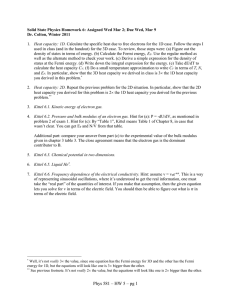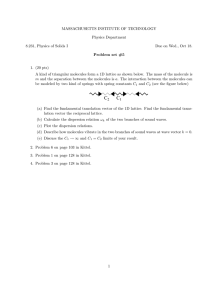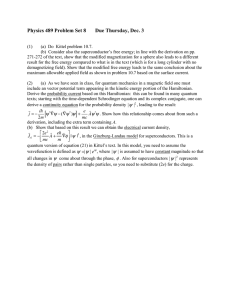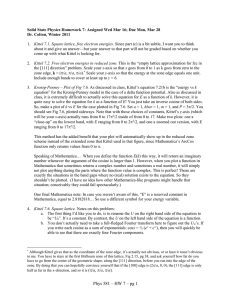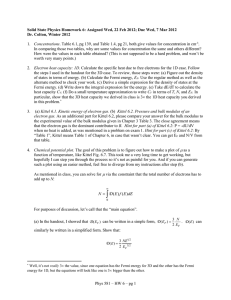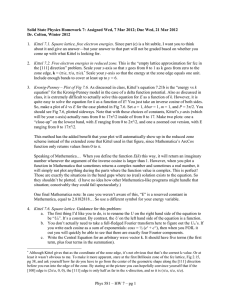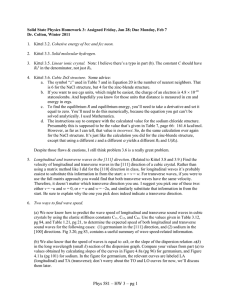hw 3A
advertisement
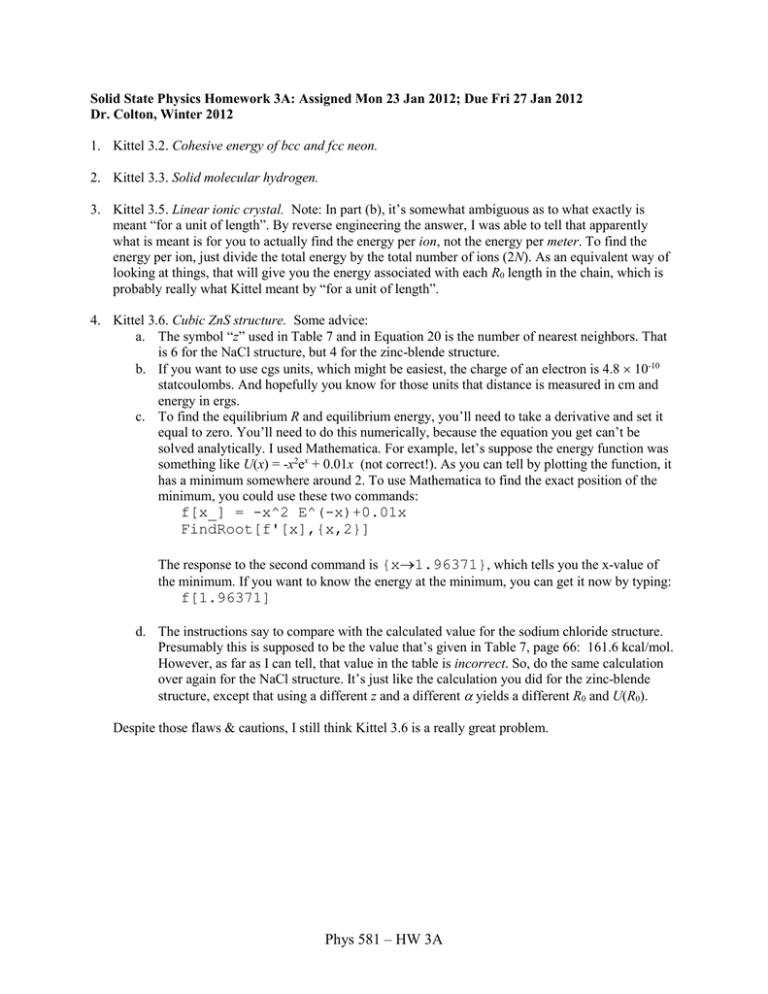
Solid State Physics Homework 3A: Assigned Mon 23 Jan 2012; Due Fri 27 Jan 2012
Dr. Colton, Winter 2012
1. Kittel 3.2. Cohesive energy of bcc and fcc neon.
2. Kittel 3.3. Solid molecular hydrogen.
3. Kittel 3.5. Linear ionic crystal. Note: In part (b), it’s somewhat ambiguous as to what exactly is
meant “for a unit of length”. By reverse engineering the answer, I was able to tell that apparently
what is meant is for you to actually find the energy per ion, not the energy per meter. To find the
energy per ion, just divide the total energy by the total number of ions (2N). As an equivalent way of
looking at things, that will give you the energy associated with each R0 length in the chain, which is
probably really what Kittel meant by “for a unit of length”.
4. Kittel 3.6. Cubic ZnS structure. Some advice:
a. The symbol “z” used in Table 7 and in Equation 20 is the number of nearest neighbors. That
is 6 for the NaCl structure, but 4 for the zinc-blende structure.
b. If you want to use cgs units, which might be easiest, the charge of an electron is 4.8 10-10
statcoulombs. And hopefully you know for those units that distance is measured in cm and
energy in ergs.
c. To find the equilibrium R and equilibrium energy, you’ll need to take a derivative and set it
equal to zero. You’ll need to do this numerically, because the equation you get can’t be
solved analytically. I used Mathematica. For example, let’s suppose the energy function was
something like U(x) = -x2ex + 0.01x (not correct!). As you can tell by plotting the function, it
has a minimum somewhere around 2. To use Mathematica to find the exact position of the
minimum, you could use these two commands:
f[x_] = -x^2 E^(-x)+0.01x
FindRoot[f'[x],{x,2}]
The response to the second command is {x1.96371}, which tells you the x-value of
the minimum. If you want to know the energy at the minimum, you can get it now by typing:
f[1.96371]
d. The instructions say to compare with the calculated value for the sodium chloride structure.
Presumably this is supposed to be the value that’s given in Table 7, page 66: 161.6 kcal/mol.
However, as far as I can tell, that value in the table is incorrect. So, do the same calculation
over again for the NaCl structure. It’s just like the calculation you did for the zinc-blende
structure, except that using a different z and a different yields a different R0 and U(R0).
Despite those flaws & cautions, I still think Kittel 3.6 is a really great problem.
Phys 581 – HW 3A
